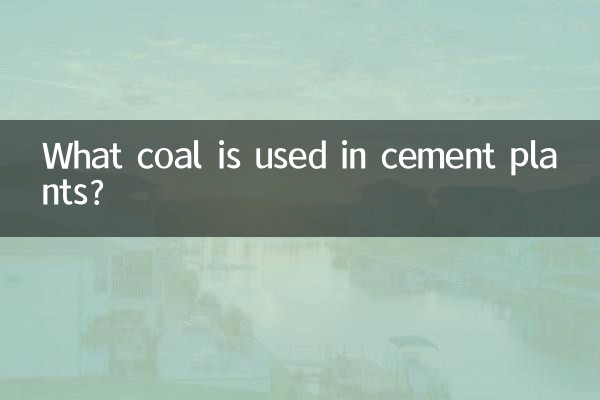What kind of coal is used in cement plants: industry hot spots and data analysis
Recently, production costs and energy options in the cement industry have become hot topics. As coal prices fluctuate and environmental protection policies tighten, coal standards for cement plants have attracted much attention. This article will combine the hot content of the entire network in the past 10 days to analyze the coal types, calorific value requirements and market trends of cement plants, and provide structured data for reference.
1. Analysis of commonly used coal types in cement plants

Cement production requires coal with high calorific value and low sulfur content to ensure kiln combustion efficiency and environmental protection standards. The following is a comparison of mainstream coal types:
| Coal type | Calorific value (kcal/kg) | Sulfur content (%) | Ash content (%) | applicability |
|---|---|---|---|---|
| anthracite | 6000-7000 | ≤0.8 | 8-15 | High calorific value, but high price |
| bituminous coal | 5000-6000 | 0.5-1.5 | 10-20 | High cost performance, mainstream choice |
| lignite | 3000-4000 | 1.0-3.0 | 20-40 | Requires pre-processing, low cost |
2. Recent hot topics: coal prices and alternative energy
1.Coal price fluctuations:According to industry data, the average price of thermal coal in October 2023 increased by 5% from the previous month, and some cement plants turned to imported coal to reduce costs.
2.Alternative energy exploration:The application cases of biomass fuel and refuse-derived fuel (RDF) in cement plants are increasing, but coal still accounts for more than 70% of energy consumption.
3. Key indicators of coal consumption in cement plants
| index | Requirements scope | Influence |
|---|---|---|
| calorific value | ≥5000 kcal/kg | Determine clinker burning efficiency |
| Volatile matter | 18-30% | Affect combustion stability |
| Ash content | ≤25% | Too high will reduce the life of the kiln |
4. Impact of environmental protection policies on coal use
The newly revised "Air Pollutant Emission Standards for the Cement Industry" in 2023 requires the sulfur emission limit to be tightened to 100mg/m³, prompting cement plants to give priority to low-sulfur coal or increase desulfurization facilities. Some companies have begun to mix high-sulfur coal with clean energy to meet the standards.
5. Forecast of future trends
1.Growth in demand for high calorific value coal:As cement technology is upgraded, the calorific value requirements for coal may further increase.
2.Regional differences are obvious:The northern region uses more local bituminous coal due to lower transportation costs; the southern coastal plants rely on imported coal.
3.The rise of digital procurement:Some companies use coal trading platforms to compare prices in real time and optimize procurement strategies.
Conclusion
The selection of coal for cement plants requires a balance between cost, calorific value and environmental protection requirements. Bituminous coal is still the current mainstream, but the proportion of anthracite and clean energy is increasing. Enterprises need to pay close attention to policy and market changes and dynamically adjust their energy structure.

check the details

check the details